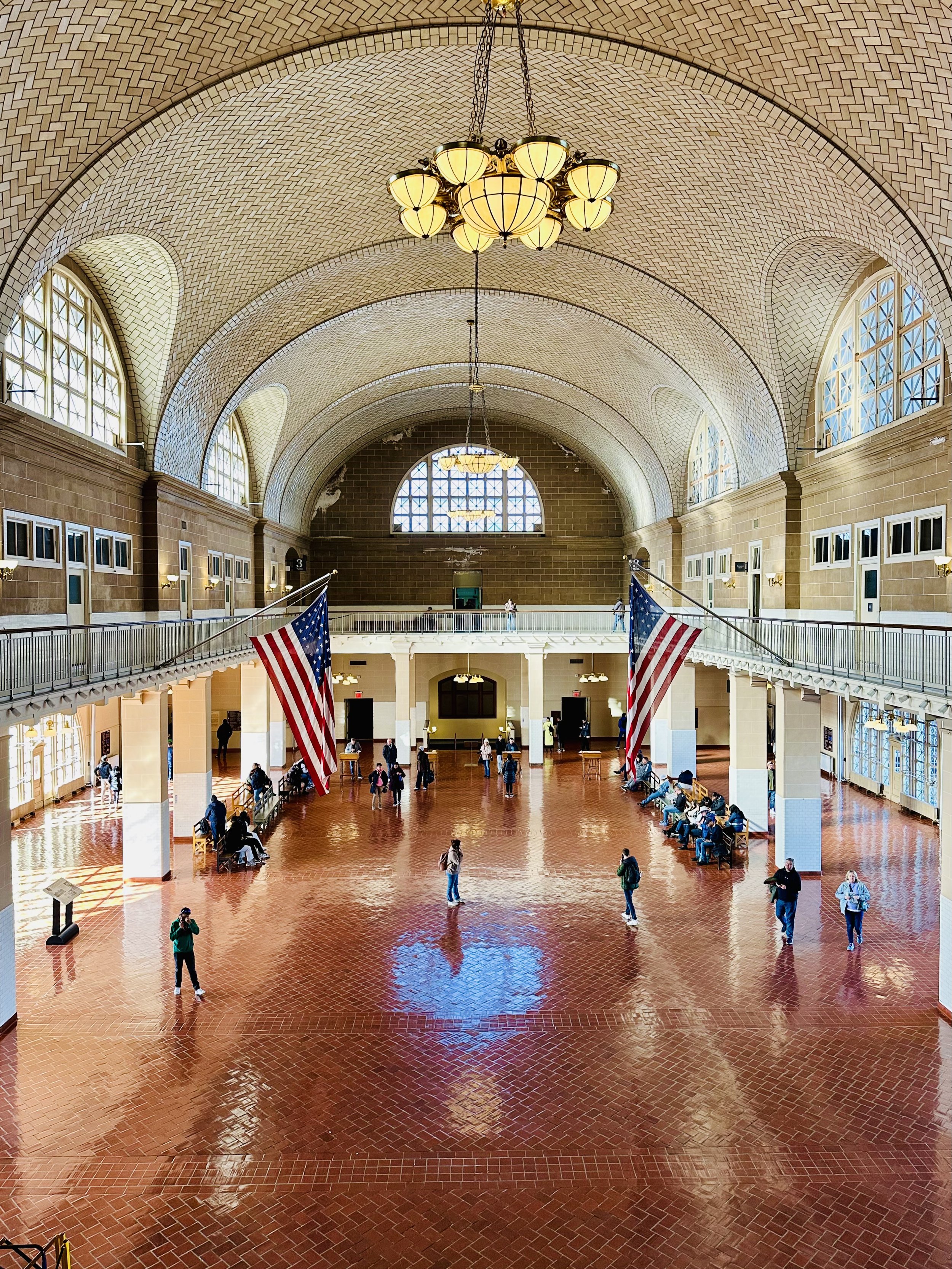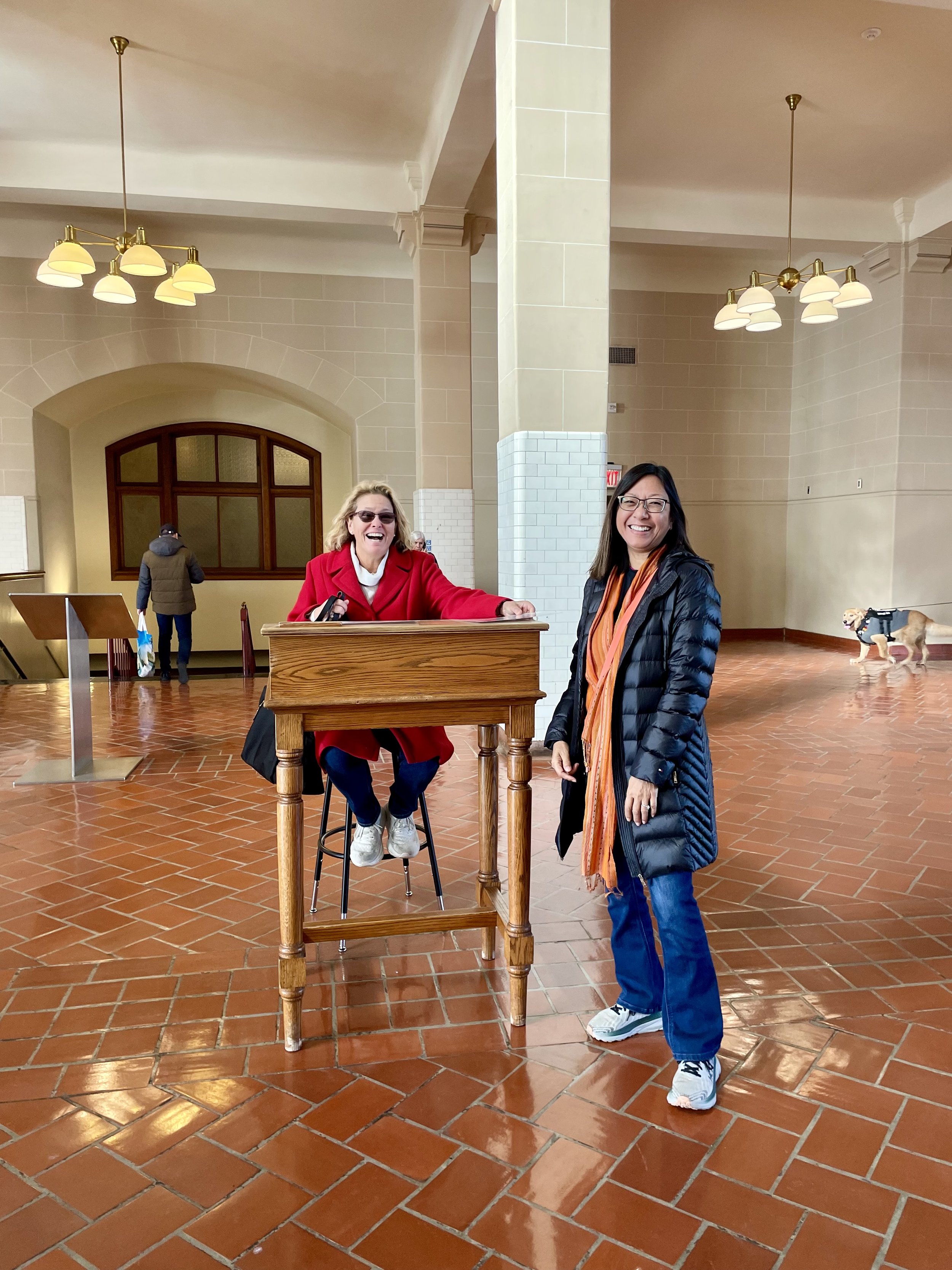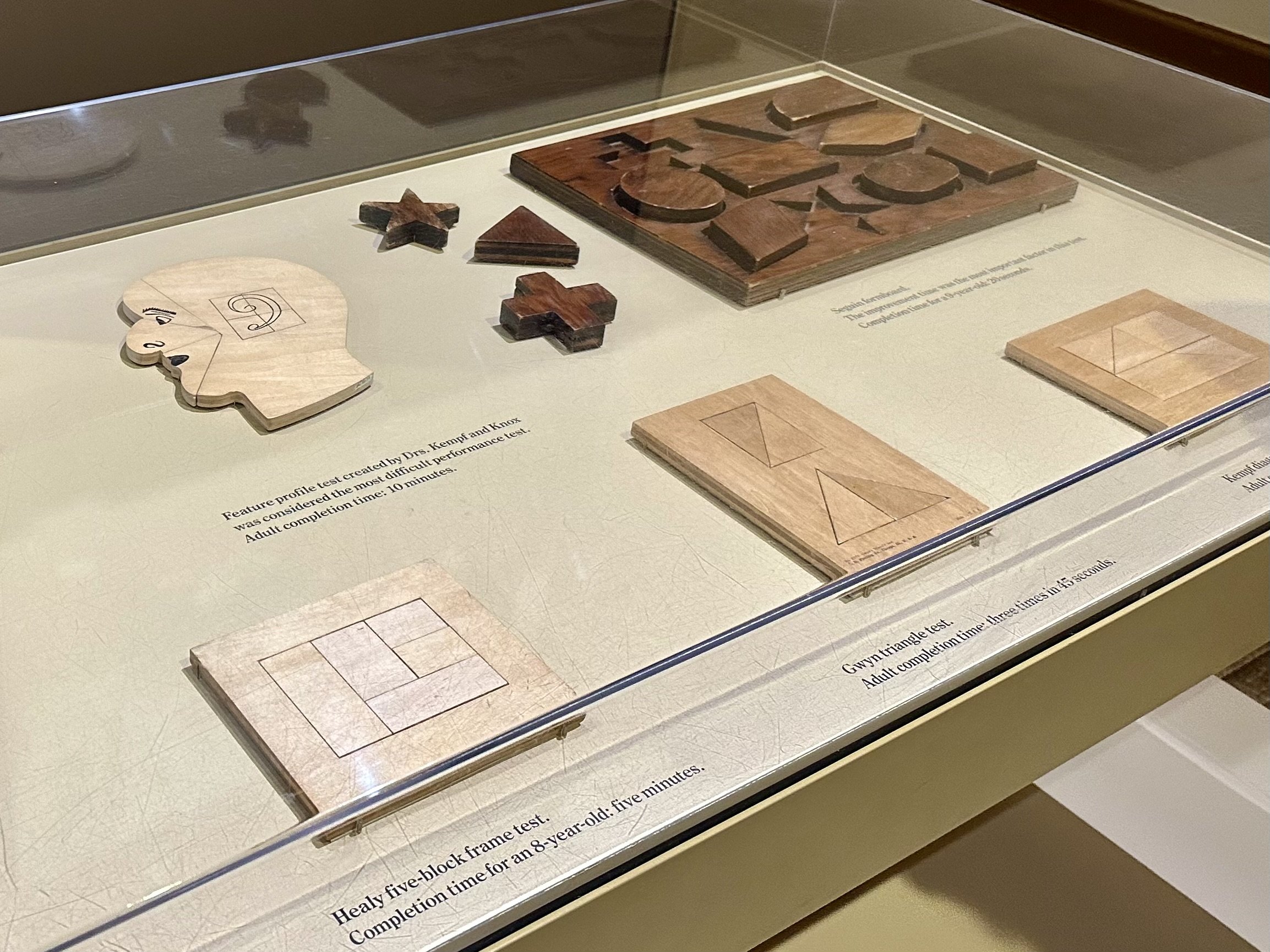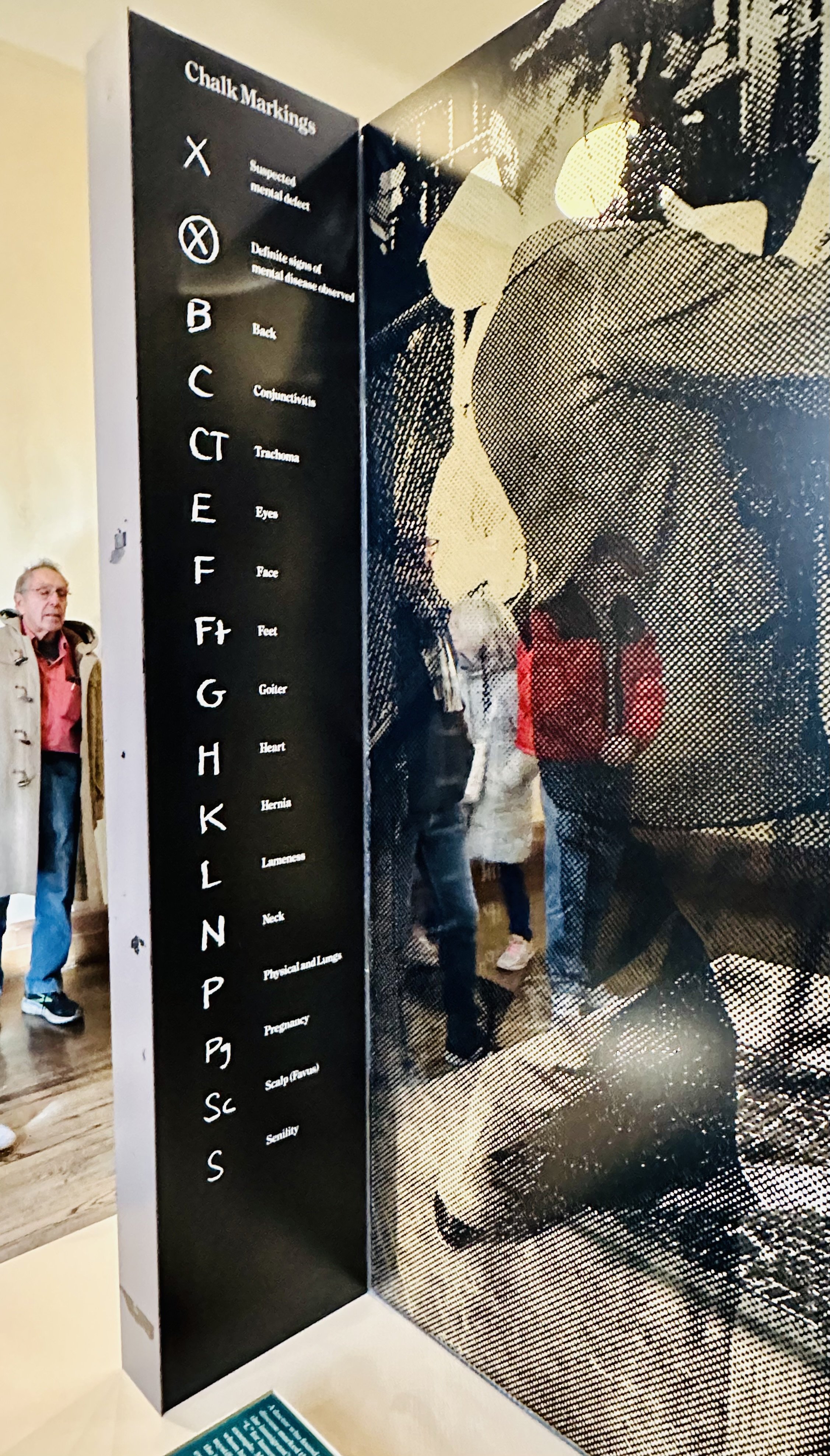Ellis Island
Ellis Island is part of the Statue of Liberty National Monument, so I visited with my friends Jean and Stephanie. From Liberty Island, we boarded another boat for the short trip to Ellis Island.
From 1892 to 1924, about 12 million immigrants arrived at Ellis Island, seeking new opportunities in the United States of America. Most of these people had been steamship passengers traveling steerage (third class), spending up to two weeks in crowded conditions in the bottom levels of the ships. (Passengers traveling in first and second class did not have to be processed at Ellis Island, as it was assumed they were affluent and “less likely to become a public charge.”)
We walked through the historic immigration station and learned about the immigrant experience. The first stop was the large Registry Room, with its distinctive Guastavino vaulted ceiling and arched windows. On a typical day, about 5,000 or more people would pass through this room for inspection and registration.



We then walked through a wing with exhibits explaining the series of inspections that every immigrant was subjected to; it was the federal government’s effort to screen out the “undesirable.” They were quickly screened for physical ability to work and for obvious signs of illness. Some were tagged and examined for contagious or incurable diseases, or tested for mental impairments. Those who passed the physical screening were interviewed to confirm literacy and sufficient funds, and then registered. Upon being granted entry to the United States, there was no document or identification paper given; the person was simply sent on their way. Some reunited on Ellis Island with family members who had arrived before them. Some purchased food and tickets on Ellis Island before boarding the ferries to New York City and the trains going west.

For most immigrants, the processing took 3-5 hours. Some were less lucky, and were forced to stay longer due to illness or delays with paperwork or with finding their relatives. Single women were often detained until their families wired money or their fiancés picked them up. Despite the battery of tests, just 2% were actually denied entry.
In 1907, more than one million immigrants were processed at Ellis Island. In the 1920s, activity on Ellis Island declined sharply. Multiple immigration laws and quotas were enacted. After World War I, U.S. embassies were established around the world, enabling immigration processing be done in the country of origin. Some say that up to 40% of United States citizens had an ancestor who passed through Ellis Island.
